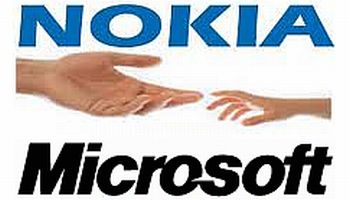Windows Phone Plus Nokia Tempts Developers

Microsoft, Nokia and Windows Phone appear to have eclipsed RIM in developers’ eyes
Whether Microsoft’s alliance with Nokia results in more Windows Phones sold, it has produced one short-term benefit: more developer interest in Microsoft’s mobile software.
That’s according to Appcelerator and research firm IDC, which surveyed 2,160 Appcelerator Titanium developers from 2 to 3 November of this year.
The resulting data suggests that, in the minds of those developers, Windows Phone has eclipsed RIM’s BlackBerry OS as a subject of interest. That makes it the third mobile OS behind Apple’s iOS and Android.
Symbiotic success
“Microsoft is enjoying symbiotic success with Nokia,” read the summary of the report. “When asked why developers are more interested in Windows Phone 7 now than a year ago, a plurality (48 percent) said it was the Microsoft/Nokia partnership.”
 Nokia’s new devices, the Lumia 710 and 800, are apparently helping drive that interest.
Nokia’s new devices, the Lumia 710 and 800, are apparently helping drive that interest.
“Nokia also received high marks from its new Lumia Windows Phone 7 smartphone announcement last month, with 28 percent of developers saying they are ‘very interested’ in developing for the device,” read the report.
“This is more than double the interest in Nokia’s own Symbian and MeeGo OSes since Appcelerator began reporting mobile platform interest in January 2010.”
In the survey’s estimation, RIM is losing steam with developers.
“This quarter saw a sharp fall-off in developers reporting that they are ‘very interested’ in RIM offerings with BlackBerry OS phones dropping 7 points to 21 percent and PlayBook QNX-based tablets dropping 6 points to 13 percent,” the report said.
“Put another way, there’s now more interest in Nokia’s new Lumia Windows Phone lineup than RIM’s smartphones.”
Global presence
Nokia opted to abandon its homegrown operating systems, including MeeGo and Symbian, in favor of Windows Phone.
For the Finnish phone maker, the hope is that Windows Phone will help it retain its global presence in the face of competitors such as Apple’s iPhone and the growing host of Google Android devices.
Microsoft, meanwhile, is banking on Nokia’s global reach to help it spread a platform that, despite some positive critical reviews, has not enjoyed massive adoption by either consumers or businesses.
In a bid to increase Windows Phone’s user base, Microsoft and its manufacturing partners plan to introduce more devices aimed at the midmarket.
In theory, that would increase the platform’s attractiveness to developers, who obviously want the broadest possible audience for their applications and games.
But that increased audience also comes at the expense of other platforms, such as RIM’s BlackBerry OS, whose companies will fight to retain what they have.